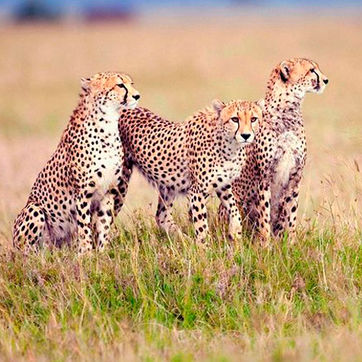


Ngorongoro Crater
Ngorongoro Crater is a vast and the world's largest unbroken volcanic caldera, that's home to nearly every species of African animal. Deservedly referred to as Africa's Eden, where zebra, buffalo and wildebeest graze amongst the predatory lion, cheetah and hyena, whilst pink flamingos and hippos gather at the water's edge. Ngorongoro Crater is also one of the last remaining areas in Tanzania where you can see the endangered Black Rhino. Our safari vehicles descend the crater wall that is teeming with these animals. However there is one iconic animal you will not see in the crater and that is the Giraffe which is present in the conservation area but not in the crater because of the steep descent into the crater.
In the lake on the crater floor and in the Ngoitokitok swamps, reside plenty of hippos who remain partially submerged during the day and graze on grass at night. The stunning pink flamingo is also resident at the Crater.
The Ngorongoro Crater is a natural amphitheatre created about 2 million years ago when the cone of a volcano collapsed into itself, leaving a 100 sq. mile cauldron-like cavity.
The landscape is made up of a blend of volcanoes, grasslands, waterfalls and mountain forests, where the wildlife is extensive. The southern and eastern boundaries are approximately defined by the rim of the Great Rift Valley, which also prevents animal migration in these directions. The annual ungulate migration passes through the Ngorongoro Conservation Area, with wildebeest and zebra moving south into the area in December and moving north in June.






